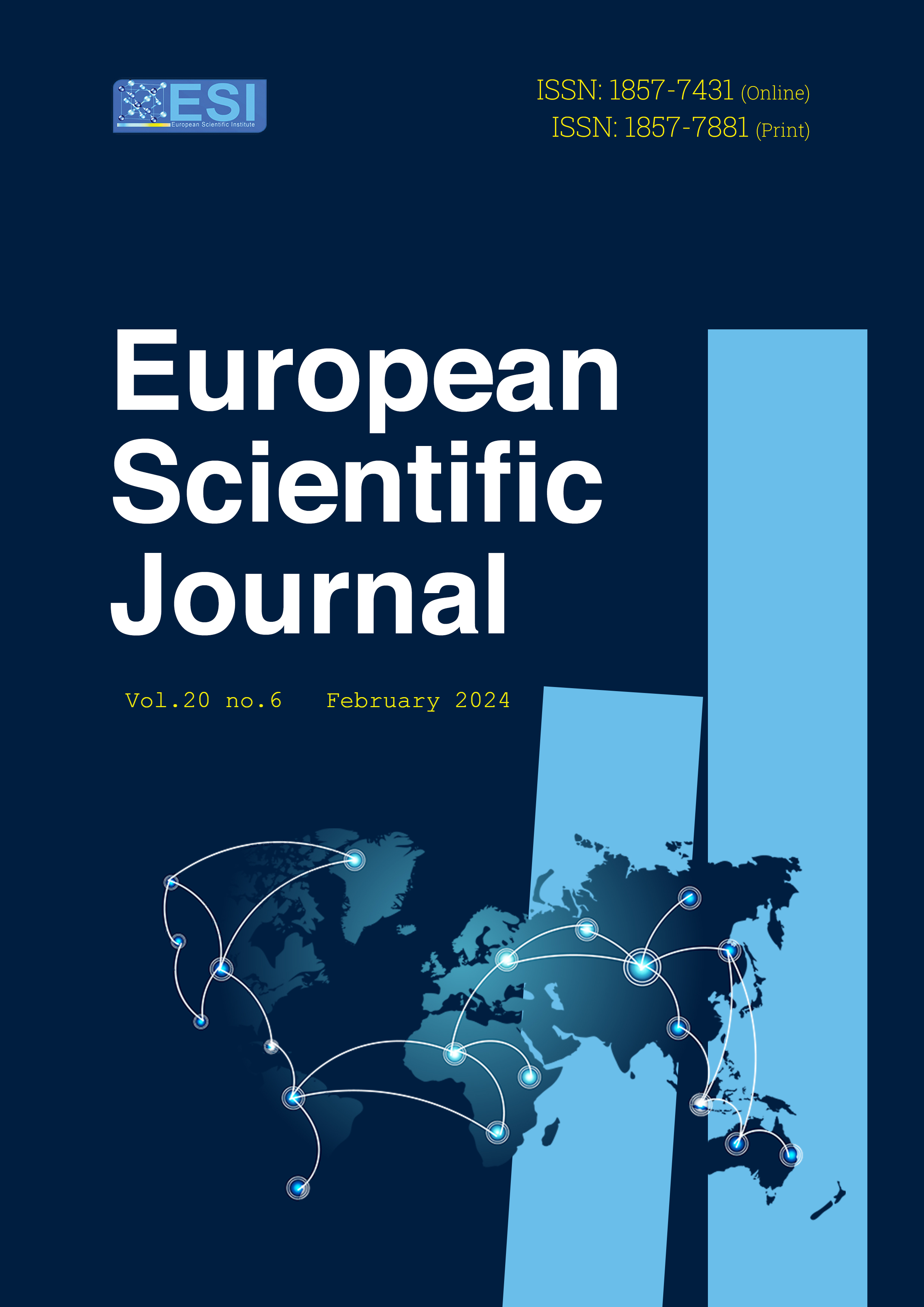Étiologies des Etats d’Agitation Reçus aux Urgences d’un Hôpital de Référence au Bénin
Abstract
Introduction : L’agitation, symptôme fréquent en milieu hospitalier est source d’une grande confusion au sein du personnel soignant. Sa prise en charge adéquate dépend non seulement de son intensité mais aussi de son étiologie le plus souvent organique.
Objectif : Étudier les états d’agitation dans les services des urgences et de psychiatrie du CHUD-B/A en 2021.
Méthodes : Il s’agissait d’une étude transversale descriptive menée du 1er décembre 2020 au 30 septembre 2021. L’échantillonnage a été exhaustif et a permis d’inclure tous les sujets admis pour un état d’agitation au service des urgences et en psychiatrie.
Résultats : Les états d’agitation ont représenté 4,97% des admissions aux urgences et 10,90% des admissions dans le service de psychiatrie. Le sexe masculin a été le plus représenté (56,47%). L’âge moyen des participants est de 34,48 ans ± 15,94 ans. Plus de la moitié (53,38%) des patients ont présenté une agitation légère. Ils ont bénéficié d’une sédation (86,47%) au diazépam (93,67%) en urgence. 78,24% des états d’agitation sont d’étiologies non psychiatriques à savoir : sepsis (23,31%), troubles métaboliques (21,80%), urgences neurologiques traumatiques (21,80%) ou non (13,53%) et urgences viscérales (13,50%) imposant des moyens thérapeutiques tels que : réhydratation, antalgiques, antibiotiques, transfusion sanguine, laparotomie. L’évolution a été favorable dans 90% des cas et quatre décès ont été recensés (03,01%).
Conclusion : Les principales étiologies des états d’agitation sont les pathologies non psychiatriques. Tout état d’agitation implique donc une exploration toxique, iatrogène organique en priorité.
Introduction: Agitation, a frequent symptom in the hospital environment, is a source of great confusion for nursing staff. Its appropriate management depends not only on its intensity, but also on its etiology, most often organic.
Objective: To study states of agitation in the emergency and psychiatric departments of CHUD-B/A in 2021.
Methods: This was a descriptive cross-sectional study conducted from December 1, 2020 to September 30, 2021. Sampling was exhaustive and included all subjects admitted for agitation to the emergency department and psychiatry.
Results: Agitation accounted for 4.97% of admissions to the emergency department and 10.90% of admissions to the psychiatric ward. Males were most represented (56.47%). The average age of participants was 34.48 ± 15.94 years. More than half (53.38%) of patients presented with mild agitation. They were sedated (86.47%) with diazepam (93.67%) as an emergency measure. 78.24% of agitation states were of non-psychiatric etiology: sepsis (23.31%), metabolic disorders (21.80%), traumatic (21.80%) or non-traumatic neurological emergencies (13.53%) and visceral emergencies (13.50%) requiring therapeutic means such as rehydration, analgesics, antibiotics, blood transfusion and laparotomy. The outcome was favorable in 90% of cases, with four deaths (03.01%).
Conclusion: The main etiologies of states of agitation are non-psychiatric pathologies. Any state of agitation therefore implies a toxic or iatrogenic organic investigation as a priority.
Downloads
Metrics
PlumX Statistics
References
2. Chevalier, C. (2006). Les patients agités dans le service des urgences au CHU d’Angers : Analyse des pratiques sur une période de six mois [Université d’ANGERS].
https://www.psychaanalyse.com/pdf/LES%20PATIENTS%20AGITES%20DANS%20LE%20SERVICE%20DES%20URGENCES%20-%20THESE%202006%20(81%20pages%20-%20475%20ko).pdf
3. Garriga, M., Pacchiarotti, I., Kasper, S., Zeller, S. L., Allen, M. H., Vázquez, G., Baldaçara, L., San, L., McAllister-Williams, R. H., Fountoulakis, K. N., Courtet, P., Naber, D., Chan, E. W., Fagiolini, A., Möller, H. J., Grunze, H., Llorca, P. M., Jaffe, R. L., Yatham, L. N., … Vieta, E. (2016). Assessment and management of agitation in psychiatry : Expert consensus. The World Journal of Biological Psychiatry, 17(2), 86‑128.
https://doi.org/10.3109/15622975.2015.1132007
4. Halpern, R., Seare, J., Tong, J., Hartry, A., Olaoye, A., & Aigbogun, M. S. (2019). Using electronic health records to estimate the prevalence of agitation in Alzheimer disease/dementia. International Journal of Geriatric Psychiatry, 34(3), 420‑431.
https://doi.org/10.1002/gps.5030
5. Horn, M., Vaiva, G., & Dumais, A. (2015). Prise en charge médicamenteuse des agitations aux urgences : Recommandations théoriques et études des pratiques. La Presse Médicale, 44(1), 20‑26. https://doi.org/10.1016/j.lpm.2014.04.027
6. Miner, J. R., Klein, L. R., Cole, J. B., Driver, B. E., Moore, J. C., & Ho, J. D. (2018). The Characteristics and Prevalence of Agitation in an Urban County Emergency Department. Annals of Emergency Medicine, 72(4), 361‑370.
https://doi.org/10.1016/j.annemergmed.2018.06.001
7. Moritz, F., Bauer, F., Boyer, A., Lemarchand, P., Kerleau, K., Moirot, E., Navarre, C., & Muller, JM. (1999). Patients in a state of agitation at the admission service of a Rouen hospital emergency department. Presse Medicale (Paris, France : 1983), 28(30), 1630‑1634.
8. Moritz, F., Jenvrin, J., Canivet, S., & Gerault, D. (2004). Conduite à tenir devant une agitation aux urgences. Réanimation, 13(8), 500‑506. https://doi.org/10.1016/j.reaurg.2004.08.005
9. Owono, J. G. (2017). Aspects épidémiologiques, cliniques et thérapeutiques des états d’agitation chez les patients hospitalisés en réanimation. Health Sciences and Diseases. https://www.hsd-fmsb.org/index.php/hsd/thesis/view/585
10. San, L., Marksteiner, J., Zwanzger, P., Figuero, M. A., Romero, F. T., Kyropoulos, G., Peixoto, A. B., Chirita, R., & Boldeanu, A. (2016). State of Acute Agitation at Psychiatric Emergencies in Europe : The STAGE Study. Clinical Practice and Epidemiology in Mental Health: CP & EMH, 12, 75‑86.
https://doi.org/10.2174/1745017901612010075
11. Thomas, G., Pape, E. L., Py-Leroy, E., & Tourinel, G. (2010). Prendre en charge un état d’agitation. Médecine Et Armées, 38(5), 435‑441.
12. Thys, F., Manara, A., & Deschietere, G. (2011). 53e congrès national d’anesthésie et de réanimation (Agitation aux urgences : De l’accueil à la prise en charge dans un service d’urgence). Les Essentiels, 9.
13. Zeller, S. L., & Rhoades, R. W. (2010). Systematic reviews of assessment measures and pharmacologic treatments for agitation. Clinical Therapeutics, 32(3), 403‑425.
https://doi.org/10.1016/j.clinthera.2010.03.006
Copyright (c) 2024 Ireti Nethania Elie Ataigba, David Sinet Koivogui, Perside Sènam N’Sia, Djibrilla Moussa, Mêmêgnon Awohouedji, Francis Tognon Tchegnonsi

This work is licensed under a Creative Commons Attribution 4.0 International License.








